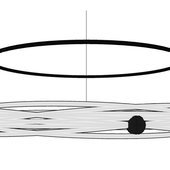You have such a thin view of the current state space. Also, your decision space is pretty much guided by "does this card make my hand better?" In THe, the state space is based on your current hand, AND what the other players could make with the board, AND what their betting says about their hand, AND the math of the pot odds for calls or how you can force them into sub-optimal pot odds decisions based on YOUR bet sizing, etc. There is a lot more going on there. Additionally, your decision space is much wider (particularly in no limit hold'em) since bet sizing is such a major part of the game.
Now I'm not a fan of using ANNs in hold'em, but that's because I hate the "feeling around in the dark" approach for something that is mathematically definable right from the start.
(Note, I'm interested in this... )





